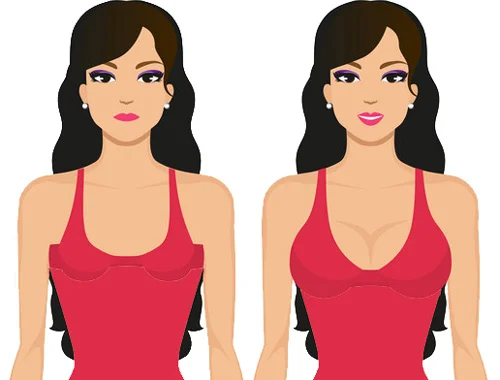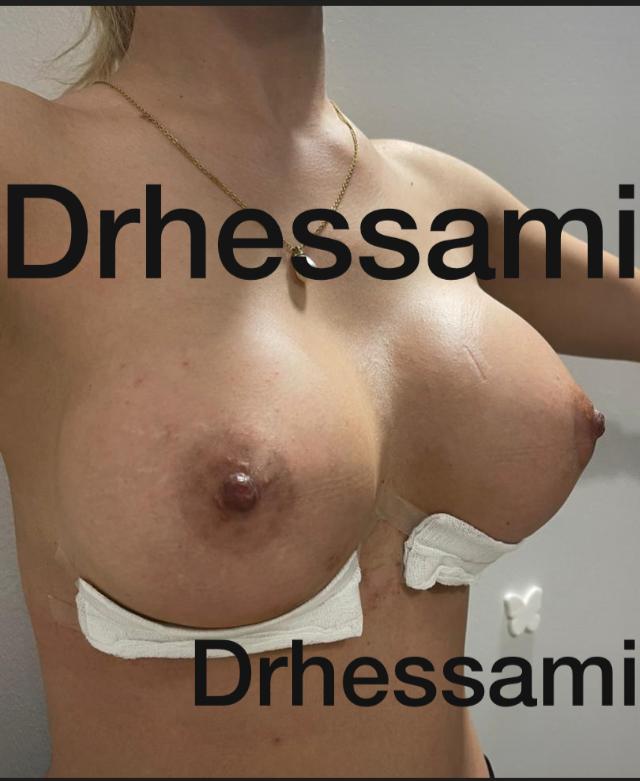breast prosthesis in Iran – Breast implant
breast prosthesis in Iran for breast shaping is a procedure in which a qualified silicone or gel prosthesis is inserted into the breast tissue through an incision made around the breast and gives it the desired shape or form.
If you are considering breast prostheses as an option, it is important to understand what it entails and the factors to consider before making a decision.
Breast prostheses are artificial breast forms that can be worn inside a bra or attached directly to the skin. They are primarily used by women who have undergone a mastectomy or lumpectomy due to breast cancer, or by those who have a congenital breast asymmetry.
The two types of breast prostheses that are usually used in this surgery are:
Some popular brands of breast prosthesis are listed below
- Motiva breast prosthesis (MOTIVA)
- Mentor breast prosthesis (MENTOR)
- Polytech breast prosthesis
- Nagor breast prosthesis (NAGOR)
The cost of breast prosthesis surgery in Iran
The price of breast prosthesis surgery in Iran is between 1800 and 2500 dollars
| The cost of Breast implant in Iran includes the following | |
| Surgeon’s salary | Between 1,800 and 2,500 dollars |
| Hospital and operating room fees | |
| The cost of buying a prosthesis | |
| The cost of pre-surgery tests | About 50 dollars |
| Drug cost | |
| The cost of a 7-day stay in Iran | 200 dollars on average |
| Transportation costs | Optional |
| The cost of care after surgery | Optional |
| The cost of a special garment after surgery | Between 50 and 70 dollars |
| mastopexy surgery package cost in Iran (without flight cost) | Between 2,100 and 2,800 dollars |
breast prosthesis in Iran typically involves the following steps:
1. Anesthesia: General anesthesia or intravenous sedation is administered for your comfort during the procedure.
2. Incision: The surgeon will make an incision in the least conspicuous area to minimize visible scarring. Common incision sites include under the breast, around the nipple, or in the armpit.
3. Inserting the implant: The breast implant is inserted either under the pectoral muscle (submuscular placement) or directly behind the breast tissue and over the pectoral muscle (subglandular placement).
4. Closing the incisions: Incisions are closed using sutures, skin adhesive, or surgical tape. Over time, the incision lines will fade.
5. Recovery: You will be provided with a surgical bra or bandage to support the breasts as they heal. Swelling and discomfort are common after surgery, but these symptoms should subside over time.
Which type of breast prosthesis should I choose?
As mentioned earlier, the type, shape and texture of the breast prosthesis chosen will determine the look and feel of your enlarged breasts.
Therefore, it is very important to choose the right type of breast prosthesis to use. Here are some tips to help you decide:
- The implant tissue helps the capsular contracture
- The best option for a prosthesis should mimic the natural shape of the breast
- Prostheses that feel natural
- Prostheses should not lose their shape inside the body
- But in the end, consultation with a surgeon can determine the best type of breast prosthesis for you

Which breast prosthesis size should I choose?
One size prosthesis is not suitable for everyone! The size of the breast prosthesis depends on factors such as the gender and thinness of the skin and the size of the chest, which will be advised to you during the visit with the surgeon.
When choosing the size of the breast prosthesis, you should carefully consider the following:
- Which breast size do you prefer?
- Which breast size suits you best?
- Do you want your breasts to look natural or bigger?
- Does my new breast size put me at high risk for a breast lift in the future?
- How will the new size affect my posture and shape?
- What do I want my body to look like?
- Which parts of my breast are small?
In general, very large implants make your breasts look unnatural. It may even affect your posture and lead to back and shoulder pain. In some cases, large implants may also be visible under your skin.
Breast implant surgical incision

Breast implant surgical incision from below the breast
A breast implant surgical incision from below the breast is also known as an inframammary incision. This type of incision is made in the fold where the breast meets the chest wall, and it can be used to insert a breast implant or to perform other breast surgery procedures.
Inframammary incisions are popular among plastic surgeons because they provide good visibility and access to the breast tissue and allow for precise placement of the implant. They also tend to heal well and produce minimal scarring, as the incision is hidden in the natural crease of the breast.
Breast implant surgical incision from the armpit
A breast implant surgical incision from the armpit is also known as a transaxillary incision. This type of incision is made in the natural crease of the armpit, and it can be used to insert a breast implant or to perform other breast surgery procedures.
Transaxillary incisions are preferred by some patients and surgeons because they can produce minimal scarring and avoid any scarring on the breast itself. However, this technique requires specialized training and equipment, and it may not be suitable for all patients or implant types. Additionally, it may be more difficult to achieve precise implant placement with a transaxillary incision, as the surgeon is working farther away from the breast tissue.
Breast implant surgical incision around the nipple
A breast implant surgical incision around the nipple is also known as a periareolar incision. This type of incision is made around the edge of the areola, the pigmented area surrounding the nipple, and it can be used to insert a breast implant or to perform other breast surgery procedures.
Periareolar incisions are preferred by some patients and surgeons because they can produce minimal scarring and allow for precise placement of the implant. Additionally, this technique can allow for any necessary adjustments to the nipple position or size to be made at the same time as the breast surgery.

Breast prosthesis placement
The placement of the prosthesis can be on the pectoral muscle or under the pectoral muscle, which is different according to the conditions of each person, and the surgeon’s opinion on the placement of the prosthesis is important.
Each has advantages and disadvantages that we will discuss further
• Placement under the muscle, It typically produces a more natural shape and feel of the breast. The muscle helps hold the implant in place and creates a smoother transition from the chest wall to the implant. This usually results in a very natural sloping contour of the upper breast and cleavage area.
• Placement under the muscle, It reduces the risk of capsular contracture. The muscle acts as an extra layer of tissue over the implant, decreasing the chance of hard scar tissue forming around the implant.
• Placement under the muscle, It provides more tissue coverage for the implant. The muscle helps prevent implant rippling and provides more coverage in women with little breast tissue.
• Placement under the muscle, The recovery may be slightly longer. Placing the implants under the muscle is a more complex procedure and can cause more discomfort and a longer recovery time. Pain and swelling may persist for 3-4 weeks.
• Placement under the muscle, The implants may be slightly higher. Submuscular placement can result in implants that sit slightly higher on the chest wall. The muscle needs to relax and drop over time to achieve the final shape and position.
• Placement under the muscle, Physical activity may be restricted. Strenuous chest exercises and heavy lifting have to be avoided for up to 6 weeks to prevent implant displacement and allow proper healing.
• Placement under the muscle, Subsequent surgeries may be more complicated. Revisions and replacements require working around the muscle and can be more difficult for the surgeon to perform.
• Placement under the muscle, Mammogram screening may require additional views. Extra images from different angles may be needed to fully visualize breast tissue during mammography. But implants do not generally interfere with mammogram quality.
Post-operative care of breast prosthesis
After breast prosthesis surgery, it’s important to follow your plastic surgeon’s post-operative care instructions to ensure proper healing and to minimize the risk of complications. Here are some general guidelines for post-operative care of breast prostheses:
1. Follow your surgeon’s instructions for post-operative care. Your surgeon will provide you with detailed instructions for care, including how to care for your incisions, how to manage pain, and when you can resume normal activities.
2. Wear a supportive garment. Your surgeon will likely recommend that you wear a supportive bra for several weeks after surgery. This will help minimize swelling and support the healing process.
3. Avoid strenuous activity. You should avoid strenuous activities, such as heavy lifting or exercise, for several weeks after surgery. Your surgeon will provide you with specific guidelines for when you can resume normal activities.
4. Take care of your incisions. It’s important to keep your incisions clean and dry to prevent infection. Your surgeon will provide you with instructions for how to care for your incisions and when you can shower or bathe after surgery.
5. Attend follow-up appointments. It’s important to attend all follow-up appointments with your surgeon to ensure that your breasts are healing properly and to address any concerns or complications that may arise.
6. Monitor your breasts for changes. It’s important to monitor your breasts for any changes, such as swelling, redness, or changes in sensation. If you notice any changes, contact your surgeon right away.
7. Consider regular breast screenings. If you have breast implants, it’s important to continue with regular breast screenings, such as mammograms or ultrasounds, as recommended by your doctor.
By following these post-operative care guidelines, you can help ensure a smooth recovery and minimize the risk of complications after breast prosthesis surgery.
How long does a breast prosthesis last?
The lifespan of a breast prosthesis, also known as a breast implant, can vary depending on several factors, including the type of implant, the patient’s lifestyle, and any complications that may arise.
Generally, breast implants can last anywhere from 10 to 20 years or more. However, it’s important to note that breast implants are not considered lifetime devices and may need to be replaced or removed at some point in the future.
Some factors that can affect the lifespan of a breast implant include:
– Type of implant: Saline and silicone implants have different lifespans. Saline implants tend to last slightly shorter than silicone implants.
– Age of the implant: The longer an implant has been in place, the greater the risk of complications such as rupture or leakage.
– Lifestyle factors: Activities such as heavy lifting or impact sports may increase the risk of implant rupture or leakage. Additionally, smoking can increase the risk of complications and may shorten the lifespan of the implant.
– Complications: Complications such as capsular contracture, implant rupture, or infection may require the implant to be removed or replaced before its expected lifespan.


